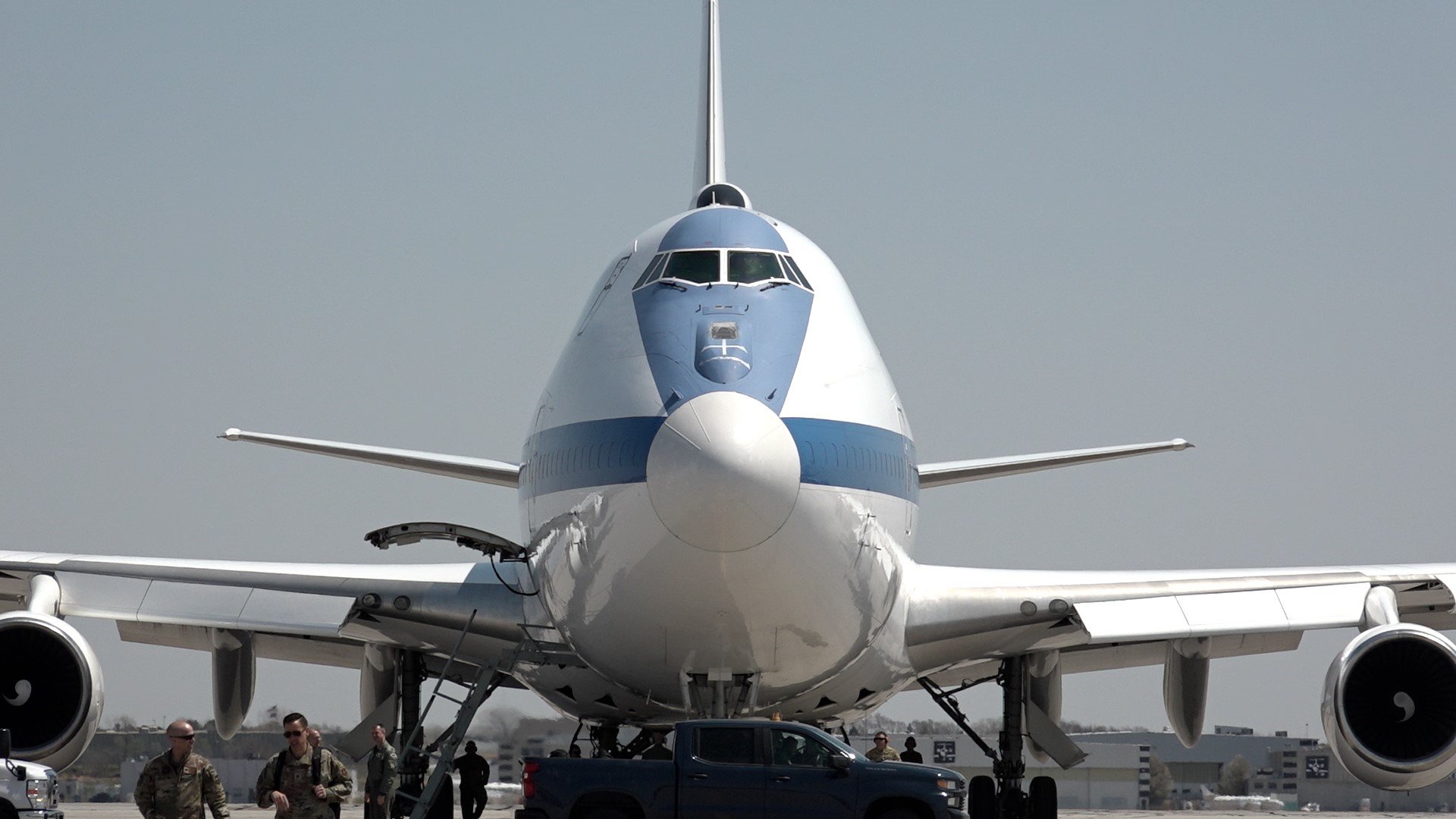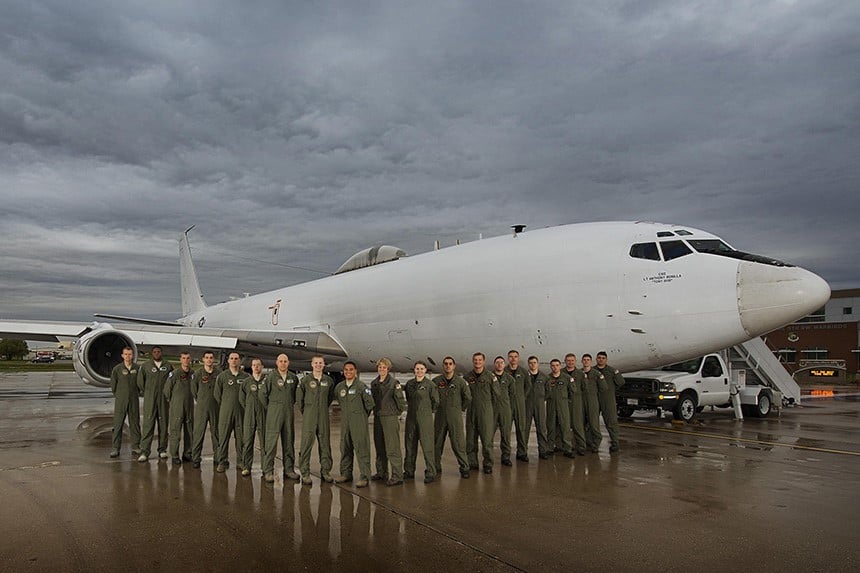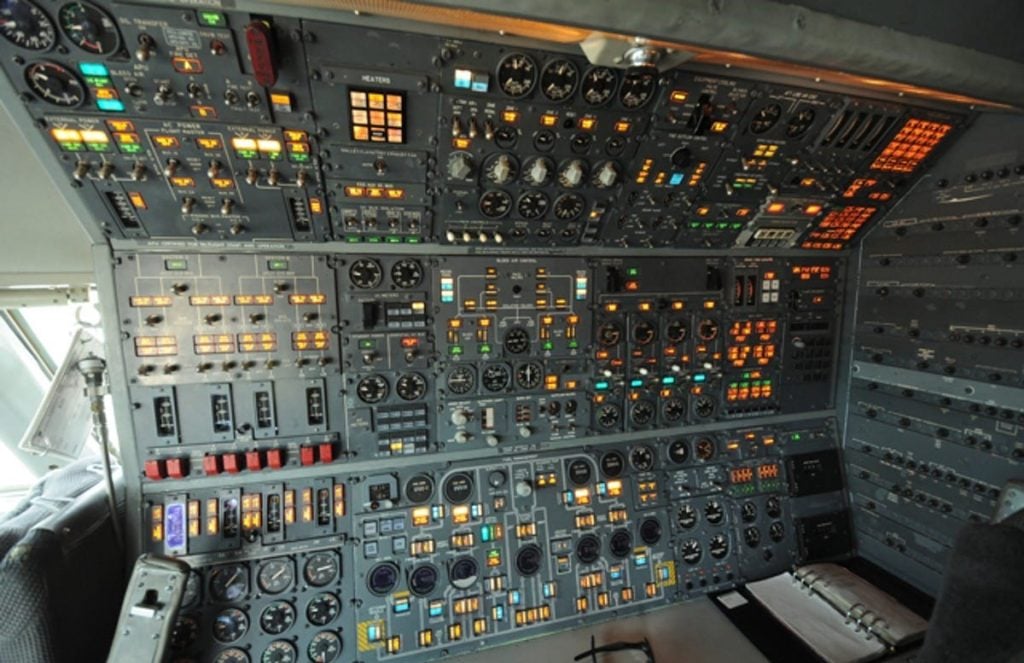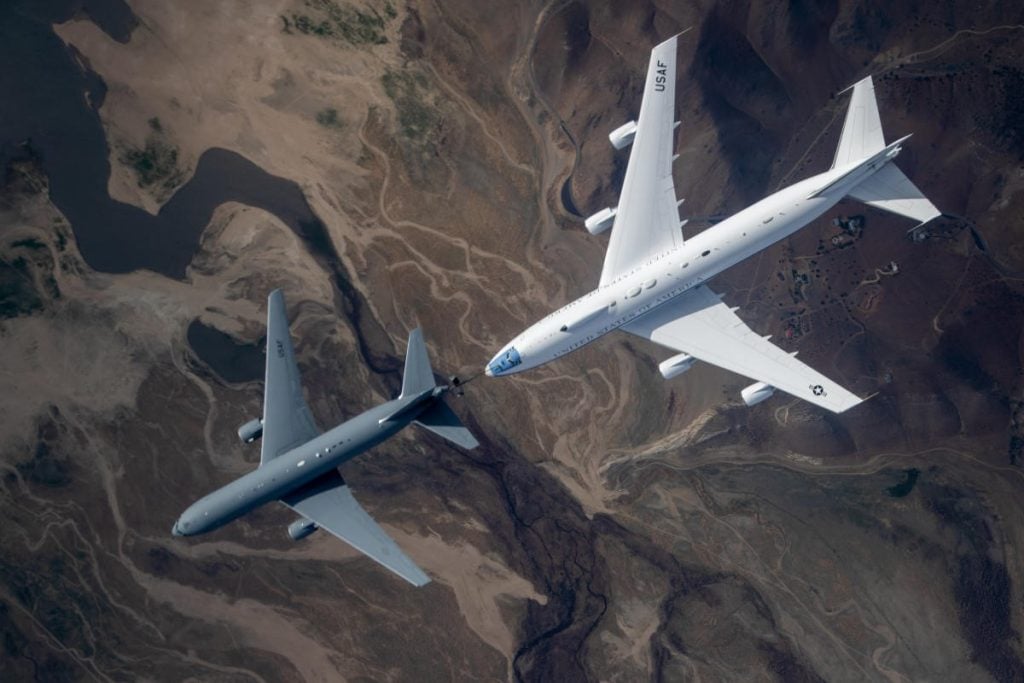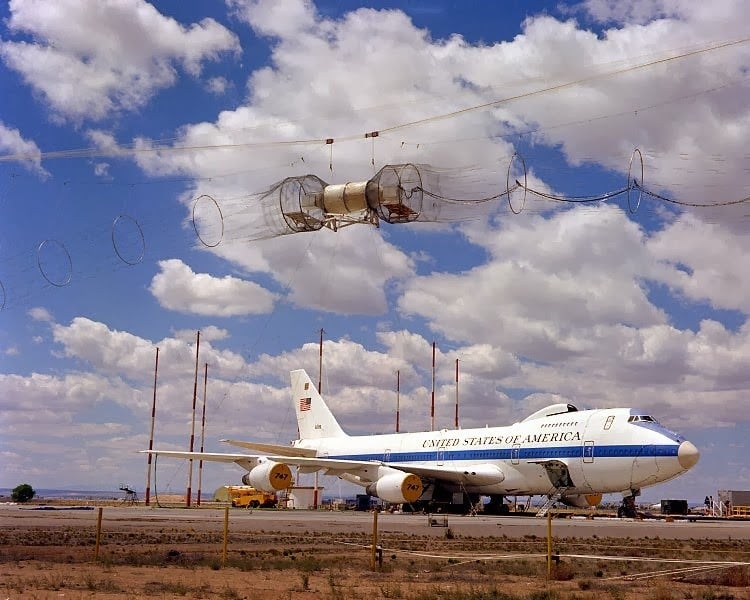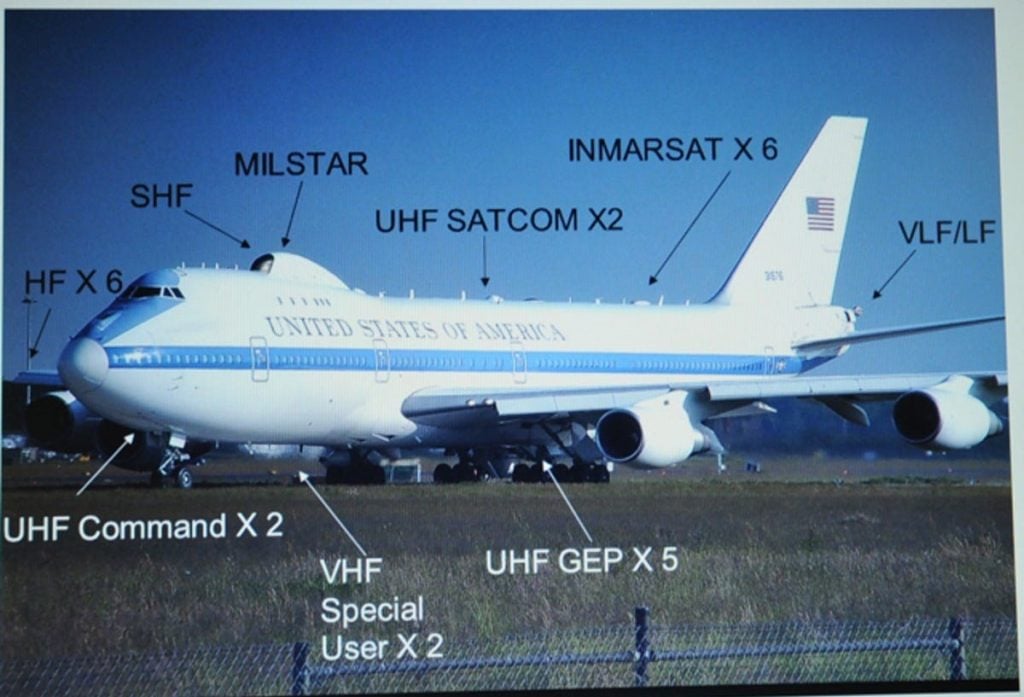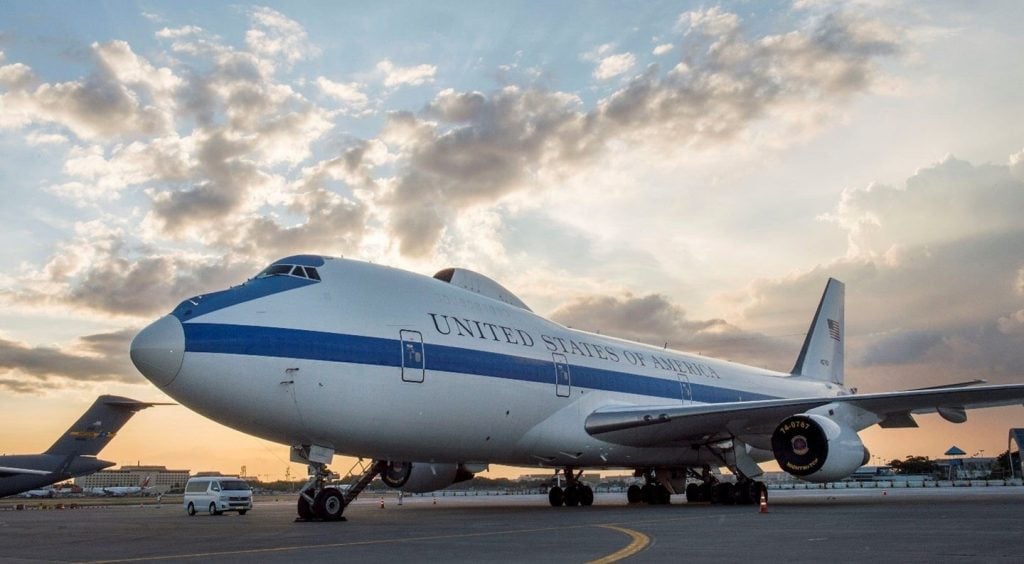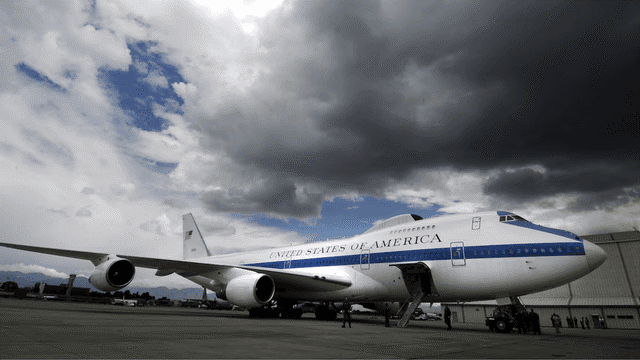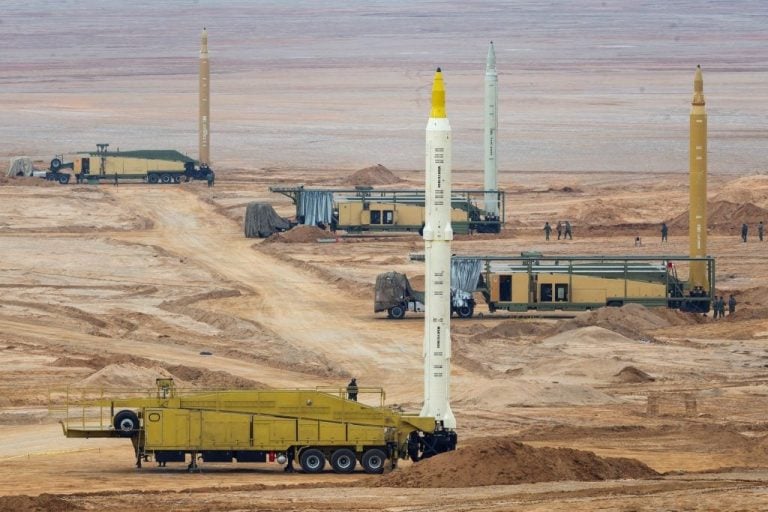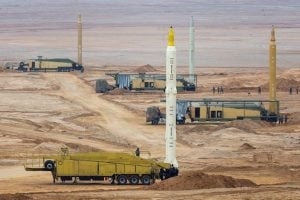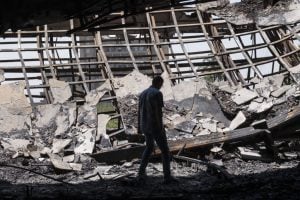The United States’ “Doomsday Planes,” also known as the “Nightwatch” aircraft or the Boeing E-4B “Advanced Airborne Command Post” (AACP), are strategic command and control military aircraft operated by the United States Air Force (USAF). Designed to serve as a resilient mobile command post for the National Command Authority in the event of a catastrophic national emergency, these highly advanced and fortified Boeing 747-200B derivatives have captured the imagination of defense enthusiasts and the general public alike.
Shrouded in secrecy and engineered to withstand the most unimaginable scenarios, the Doomsday Planes represent the pinnacle of airborne command and control capabilities. From their cutting-edge communications suites to their robust hardening against the effects of nuclear warfare, these aircraft embody the unwavering determination of the United States to maintain continuity of government and military operations, even in the face of the direst of circumstances.
In this comprehensive article, we delve into 7 Facts about US Doomsday Plane, exploring their origins, capabilities, and the critical role they play in safeguarding the nation’s security and resilience.
The Doomsday Plane’s Unique Origins and Designation
The Doomsday Planes, or the Boeing E-4B “Advanced Airborne Command Post” (AACP), are a militarized version of the commercial Boeing 747-200 aircraft. Developed as part of the National Emergency Airborne Command Post (NEACP) program, the E-4B fleet was conceived during the height of the Cold War, when the threat of nuclear conflict was a constant concern.
Initially, the program called for the acquisition of seven 747 airframes, with six serving as operational command posts and one designated for research and development. The first two E-4A aircraft, which were equipped with the same communications capabilities as the predecessor EC-135 “National Emergency Airborne Command Post,” were delivered in 1973 and 1974, respectively.
In 1979, the fourth aircraft was ordered and designated as the E-4B, featuring a more advanced and hardened communications suite, including a distinctive dorsal radome housing a super-high-frequency satellite antenna. By 1985, all three E-4A aircraft had been upgraded to the E-4B configuration, standardizing the fleet and enhancing its overall capabilities.
Why the Air Force Rejected the F-15SE Silent Eagle
Unparalleled Communications and Survivability
The Doomsday Planes are designed to maintain uninterrupted communication links with military forces, government agencies, and civilian authorities, even in the event of a catastrophic event like a nuclear attack. Each E-4B is equipped with an array of cutting-edge communication technologies, including very low-frequency antennas that can be trailed up to 5 miles (8 km) behind the aircraft, as well as super-high-frequency and Milstar satellite communications systems.
The aircraft’s hardening against the effects of electromagnetic pulses (EMPs) is a critical feature, ensuring the survivability of its sophisticated electronics and wiring. The cockpit is outfitted with analog controls and hardwired phones and monitors, while the rest of the aircraft’s systems are shielded from the devastating impacts of nuclear electromagnetic radiation.
In addition to its robust communications and survivability features, the E-4B boasts impressive performance capabilities. With a top speed of 602 mph (969 km/h) and a maximum takeoff weight of 800,000 pounds (362,874 kg), these airborne command centers can stay aloft for extended periods, refueling in-flight to maintain their vital mission.
The Doomsday Plane’s Operational Role and Crew
The primary function of the Doomsday Planes is to serve as a mobile command center for the National Command Authority, which includes the President of the United States, the Secretary of Defense, and other key government and military officials. In the event of a national emergency, such as a nuclear attack, the E-4B can quickly take to the skies, providing a secure and resilient platform from which the nation’s leadership can coordinate and direct military and civilian response efforts.
The aircraft’s crew is highly specialized, consisting of pilots, communications specialists, navigators, flight engineers, and attendants, as well as a battle staff of officers from various military services. This team is responsible for operating the aircraft’s sophisticated systems, maintaining communications, and providing strategic guidance to the National Command Authority.
To ensure the crew’s readiness and endurance, they rotate between operating and resting, with the aircraft’s three-deck interior accommodating 57 cases of Meal, Ready-to-Eat (MRE) and 14 bunks for the crew to rest and recharge during extended missions.
The Doomsday Plane’s Unique Capabilities
The Doomsday Planes are not merely upgraded commercial airliners; they are highly specialized military aircraft with a range of unique capabilities that set them apart from even the most advanced civilian and military transport planes.
One of the most impressive features of the E-4B is its ability to withstand the effects of a nuclear attack. The aircraft’s systems, including its communications, electronics, and wiring, are hardened against the thermal and electromagnetic pulse (EMP) effects of a nuclear detonation. This ensures that the Doomsday Plane can maintain its critical functions and continue to serve as a mobile command center, even in the most extreme circumstances.
In addition to its nuclear hardening, the E-4B is equipped with a range of advanced communication systems that allow it to communicate with virtually any military or civilian entity, regardless of their location or the state of the surrounding infrastructure. This includes the ability to establish secure, jam-resistant links with satellites, ground-based facilities, and even submerged submarines.
The aircraft’s impressive performance capabilities, including its high-speed and long-endurance, further enhance its operational flexibility and resilience. With the ability to refuel in-flight, the E-4B can remain airborne for extended periods, ensuring that the National Command Authority has a secure and mobile command center at their disposal at all times.
The Doomsday Plane’s Operational Readiness and Deployment
To ensure the Doomsday Planes are always ready to respond to a national emergency, the United States Air Force maintains a constant state of operational readiness. At least one E-4B is on alert 24/7, 365 days a year, with a dedicated crew stationed at the nearby Offutt Air Force Base in Nebraska, ready to launch the aircraft at a moment’s notice.
During times of heightened tension or uncertainty, the Doomsday Planes may be deployed to strategic locations around the world, ensuring that the National Command Authority has a secure and mobile command center in close proximity. It is believed that the President of the United States is always accompanied by or in close proximity to a Doomsday Plane while traveling abroad, providing an additional layer of security and continuity of government.
The cost of operating the Doomsday Planes is substantial, with estimates suggesting a price tag of around $160,000 per hour of flight time. This reflects the highly specialized nature of the aircraft and the extensive resources required to maintain its state-of-the-art systems and the large crew needed to operate them.
4 Best Military Night Vision Goggles
The Doomsday Plane’s Enduring Legacy and Planned Replacement
Despite their advanced age, with the E-4B fleet now more than 40 years old, the Doomsday Planes have remained a vital component of the United States’ national security infrastructure. Their unique capabilities and the critical role they play in ensuring the continuity of government have made them an indispensable asset, even as the geopolitical landscape has evolved since the Cold War era.
However, the advanced age of the E-4B fleet has prompted the United States Air Force to begin the process of developing a replacement platform, known as the “Survivable Airborne Operations Center” (SAOC). This new system is currently in the early stages of research and development, with the Air Force requesting increased funding in its 2023 budget to accelerate the program.
While the timeline for the SAOC’s introduction remains uncertain, the Air Force has expressed its commitment to ensuring that the nation’s airborne command and control capabilities remain at the forefront of military technology. The Doomsday Planes, despite their advancing years, will continue to play a crucial role in safeguarding the United States’ security and resilience until their successor is ready to take the reins.
Fascinating Facts About the Doomsday Plane
As the United States’ ultimate airborne command and control platform, the Doomsday Plane has captured the imagination of defense enthusiasts and the general public alike. Beyond its primary mission and capabilities, these aircraft are shrouded in a veil of mystery and intrigue, with a host of fascinating facts that further enhance their legendary status.
- Superior to Air Force One: The Doomsday Plane is widely regarded as a far more capable aircraft than the iconic Air Force One. While the presidential transport plane is designed for comfort and symbolism, the E-4B is a highly specialized military command center, capable of withstanding the most extreme conditions and maintaining critical communications during a national crisis.
- Hardened Against Nuclear Threats: The Doomsday Plane’s electrical systems and communications equipment are meticulously hardened against the effects of electromagnetic pulses (EMPs) and other nuclear threats, ensuring the aircraft’s survivability in the event of a catastrophic attack.
- Astronomical Operating Costs: Keeping the Doomsday Planes airborne comes with a hefty price tag, with estimates suggesting a cost of around $160,000 per hour of flight time. This reflects the aircraft’s highly specialized nature and the extensive resources required to maintain its advanced systems and large crew.
- Analog Systems for Resilience: In a nod to the aircraft’s Cold War origins, the Doomsday Plane’s cockpit is equipped with analog flying instruments, which are less vulnerable to the effects of an EMP attack than their digital counterparts. This design choice enhances the aircraft’s overall resilience and survivability.
- Constant State of Readiness: To ensure the Doomsday Planes are always prepared to respond to a national emergency, the United States Air Force maintains a 24/7, 365-day-a-year alert status, with a dedicated crew stationed near the aircraft’s home base at Offutt Air Force Base in Nebraska.
- Potential Involvement in 9/11: While unconfirmed, there are reports that a Doomsday Plane may have been spotted over the White House on September 11, 2001, during the terrorist attacks in New York City. The true nature of this aircraft’s involvement, if any, remains a closely guarded secret.
- Shrouded in Secrecy: Despite the Doomsday Plane’s existence being public knowledge, the United States Air Force maintains a thick veil of secrecy around these aircraft, refusing to disclose detailed information about their capabilities, operations, and crew.
These fascinating facts and the Doomsday Plane’s overall enigmatic nature continue to captivate defense enthusiasts and the broader public, solidifying the aircraft’s status as one of the most intriguing and critical components of the United States’ national security infrastructure.
The Doomsday Plane’s Enduring Relevance in a Changing World
As the geopolitical landscape has evolved since the height of the Cold War, the relevance and importance of the Doomsday Planes have not diminished. In fact, these highly specialized aircraft have become even more crucial in ensuring the continuity of government and military operations in an increasingly complex and unpredictable global environment.
While the threat of a large-scale nuclear conflict may have receded, the potential for other types of catastrophic events, such as cyberattacks, natural disasters, or even pandemics, has risen to the forefront of national security concerns. The Doomsday Planes’ ability to maintain secure and resilient communications, as well as their capacity to serve as a mobile command center, make them an indispensable asset in responding to such emergencies.
Moreover, the Doomsday Planes’ versatility and adaptability have allowed them to evolve and remain relevant in the face of changing threats. The ongoing modernization and upgrades to the E-4B fleet, such as the incorporation of more advanced communications and survivability features, ensure that these aircraft continue to meet the demands of the modern security landscape.
As the United States Air Force works to develop a replacement for the aging Doomsday Planes, the E-4B fleet will continue to play a crucial role in safeguarding the nation’s security and resilience. The Doomsday Planes’ enduring legacy and the vital function they serve in ensuring the continuity of government and military operations solidify their status as one of the most remarkable and indispensable assets in the United States’ defense arsenal.
5 Reasons the US Air Force Band Rocks
Conclusion
The United States’ “Doomsday Planes,” the Boeing E-4B “Advanced Airborne Command Post,” are a testament to the nation’s unwavering commitment to maintaining continuity of government and military operations, even in the face of the most unimaginable scenarios. From their origins during the height of the Cold War to their ongoing modernization and relevance in the 21st century, these highly specialized aircraft have captured the imagination of defense enthusiasts and the broader public alike.
With their robust communications capabilities, hardened systems, and impressive performance characteristics, the Doomsday Planes represent the pinnacle of airborne command and control. As the United States Air Force works to develop a replacement platform, the E-4B fleet will continue to play a vital role in safeguarding the nation’s security and resilience, ensuring that the National Command Authority always has a secure and mobile command center at their disposal.
The 7 captivating facts presented in this article offer a glimpse into the enigmatic world of the Doomsday Planes, showcasing their unique capabilities, operational readiness, and enduring legacy. As the United States navigates an increasingly complex and unpredictable global landscape, the Doomsday Planes will undoubtedly remain a critical component of the nation’s defense infrastructure, ready to respond to any crisis that may arise.
FAQs
1. What is a doomsday plane used for?
The E-4B, built on the Boeing 747 platform, is operated by the US Air Force. It functions as an airborne command center for the president, secretary of defense, and other top government and military officials during emergencies.
2. What are the new Doomsday planes?
Sierra Nevada Corp. aims to convert five Boeing 747-8 aircraft into the U.S. Air Force’s new fleet of Survivable Airborne Operations Center planes, enabling the president to command forces during a nuclear conflict or other major crises.
3. Is the U.S. Doomsday plane in the UK?
The aircraft is assisting the U.S. President during his visit to the UK. The E-4B ‘Nightwatch’ is outfitted with all the necessary tools for U.S. officials to maintain governmental operations, even from the air, in the event of a major global crisis. The National Airborne Operations Center consists of a fleet of four E-4Bs.
4. What is the hump on the doomsday plane?
December 1979 a fourth aircraft (75-0125) was added. This aircraft was fitted with the distinctive “Hump” on the back of the upper deck, housing the SHF antenna. It also offered upgraded accommodations, additional shielding, upgraded electronics and new CF-6-50E2 engines.
5. What is the nickname of the Doomsday plane?
The official names for the Doomsday plane are the E-4B “Nightwatch” and the National Airborne Operations Center. This aircraft is designed to ensure that high-ranking U.S. military officials remain safe and airborne in the event of a nuclear strike. The first E-4B currently in operation has been in service since 1980.


